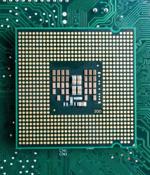Security News

A group of researchers has revealed details of a new vulnerability affecting Intel CPUs that enables attackers to obtain encryption keys and other secret information from the processors. "The scan of the I/O address space on Intel CPUs based on the Sunny Cove microarchitecture revealed that the memory-mapped registers of the local Advanced Programmable Interrupt Controller are not properly initialized," the researchers noted.

The security community is so focused on attacks relying on software that it often forgets that physical attacks are possible. Physical attacks are also often seen as an attacker having the capability to physically access the targeted computer and then use some hardware to compromise the computer.

Intel has disclosed how it may be able to protect systems against some physical threats by repurposing circuitry originally designed to counter variations in voltage and timing that may occur as silicon circuits age. According to Intel, adding the TRC brings fault injection detection technology to the Converged Security and Management Engine, a part of the Platform Controller Hub chipset in Alder Lake.

What is an APIC, and why do I need it? How can you have data that even the kernel can't peek at? What causes this epic failure in APIC? Does the ÆPIC Leak affect me? What to do about it? What's an APIC? How can you have data that even the kernel can't peek at?

A group of computer scientists has identified an architectural error in certain recent Intel CPUs that can be abused to expose SGX enclave data like private encryption keys. The bug affects recent Intel CPUs based on the company's Sunny Cove microarchitecture, the authors say.

Infosec boffins have released a tool to decrypt and unpack the microcode for a class of low-power Intel CPUs, opening up a way to look at how the chipmaker has implemented various security fixes and features as well as things like virtualization. Published Monday on GitHub, the Intel Microcode Decryptor is a collection of three Python scripts users can execute to decode the microcode - including the SGX XuCode - of certain Atom, Pentium, and Celeron CPUs based on Intel's Goldmont and Goldmont Plus microarchitectures.

Retbleed is also the latest addition to a class of Spectre attacks known as Spectre-BTI, which exploit the side effects of an optimization technique called speculative execution by means of a timing side channel to trick a program into accessing arbitrary locations in its memory space and leak private information. Speculative execution attempts to fill the instruction pipeline of a program by predicting which instruction will be executed next in order to gain a performance boost, while also undoing the results of the execution should the guess turn out to be wrong.

Older AMD and Intel chips are vulnerable to yet another Spectre-based speculative-execution attack that exposes secrets within kernel memory despite defenses already in place. "Unlike its siblings, who trigger harmful branch target speculation by exploiting indirect jumps or calls, Retbleed exploits return instructions," explained Wikner and Razavi in a draft blog post about the design bug provided to The Register.

A newly discovered security vulnerability in modern Intel and AMD processors could let remote attackers steal encryption keys via a power side channel attack. This can have significant security implications on cryptographic libraries even when implemented correctly as constant-time code to prevent timing-based side channels, effectively enabling an attacker to leverage the execution time variations to extract sensitive information such as cryptographic keys.

A new side-channel attack known as Hertzbleed allows remote attackers to steal full cryptographic keys by observing variations in CPU frequency enabled by dynamic voltage and frequency scaling. "In the worst case, these attacks can allow an attacker to extract cryptographic keys from remote servers that were previously believed to be secure. [.] Hertzbleed is a real, and practical, threat to the security of cryptographic software," the security researchers explain.